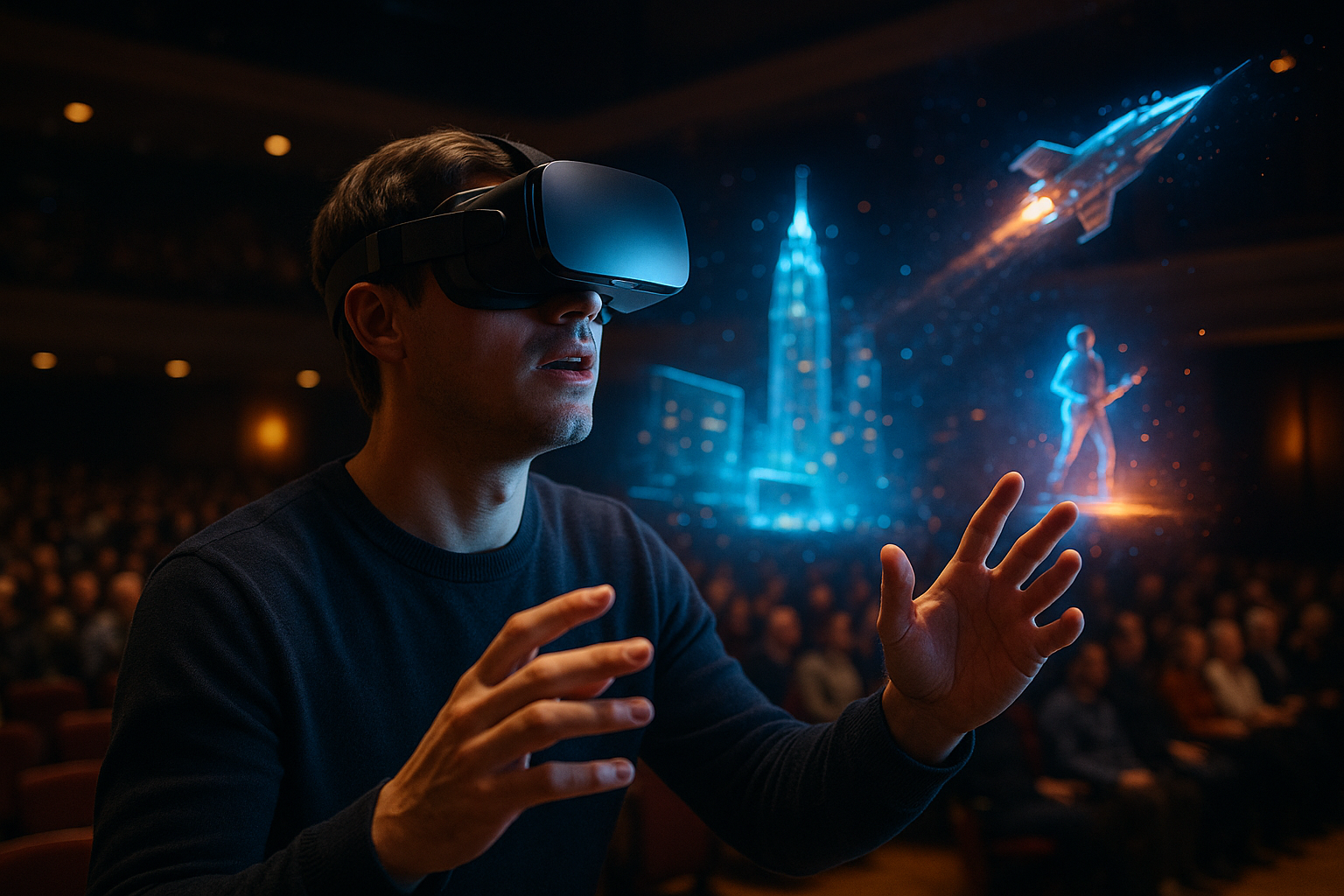Immersive Technology: A New Dawn in the Entertainment Landscape
Introduction: The entertainment industry is on the brink of a major transformation, powered by the surge in immersive technologies. From virtual reality to augmented reality, these innovations are redefining audience experiences, and reshaping the future of arts and entertainment.

The Advent of Immersive Technology
Immersive technology, broadly encompassing virtual reality (VR), augmented reality (AR), and mixed reality (MR), has slowly but surely been seeping into the entertainment industry for the past decade. The roots of this technology can be traced back to the 1960s, when the Sensorama machine was invented, offering 3D visuals, vibrations, and even smells to simulate an environment. However, it wasn’t until the 21st century that these technologies started gaining traction, thanks to advancements in computing power, graphics, and connectivity.
The Current Scenario: Immersive Technology in Entertainment Today
Cut to the present day, and immersive technology has expanded beyond experimental stages. Major film studios and production houses are now investing in VR and AR to create enhanced behind-the-scenes content, interactive movie experiences, and promotional campaigns. Moreover, the gaming industry is experiencing a renaissance with immersive technology, offering players an unparalleled level of engagement and interactivity.
The Impact of Immersive Technology
The impact of immersive technology on the entertainment industry is profound. It’s transforming the way content is consumed, pushing the boundaries of storytelling, and offering audiences a chance to be not just spectators, but active participants. The immersive nature of these technologies allows for a deeper emotional connect, and a more personalized, interactive experience.
Future Prospects: The Road Ahead
The potential of immersive technology in the entertainment industry is immense. With the advent of 5G technology, the possibilities for more realistic and seamless immersive experiences are about to skyrocket. Future applications could include virtual concerts where fans can experience live performances from the comfort of their homes, or immersive theatre where audiences can interact with the storyline in real time.
Challenges and Opportunities
Despite its potential, immersive technology also presents significant challenges. High production costs, technical complexities, and the need for specialized hardware can be barriers to widespread adoption. However, these challenges also present opportunities. As the technology evolves, so too will the strategies and business models that drive its application in the arts and entertainment industry.
In conclusion, immersive technology is poised to revolutionize the entertainment industry. It’s a thrilling prospect that promises to usher in a new era of experiential entertainment, altering the way we perceive and interact with art and media. Ultimately, the successful integration of these technologies will rest on the industry’s ability to adapt, innovate, and create compelling content that captivates audiences in an entirely new way.





